A child appeared in the house: cute, smiling and so small! You involuntarily want to protect and protect him from everything in the world, but sometimes it is difficult for a mother to help a baby, it is especially difficult to figure out why she is crying. infant. Some grandmothers say: “Let him scream - he develops his lungs!”. But this approach is by no means correct. It is imperative to understand the cause of children's crying and find a solution.
Children's cry as communication
A child's cry broke the silence - was born new person. All expectant mothers are looking forward to the first cry and rejoice when they hear it. And the absence of a cry, on the contrary, makes you worry and wonder if everything is in order. Screaming means everything is fine: this logic only works at the birth of a baby. Healthy young children whose needs are fully met do not cry for no reason.
Young children cannot talk, and crying is often the only way to express their needs. But how to understand what exactly the child wanted to “say” with the help of crying? An interesting way to understand why a baby is crying was proposed by Spanish scientists. They advise looking into the baby's eyes. If they are open, then the child is angry or scared, and if the eyes are closed, then it hurts.
Also, experts advise to look at the facial expressions of the baby and the nature of crying. An angry child cries loudly and sobbing, gradually calming down. When sick, crying can drag on for several hours. The child will not only not calm down over time, but will start crying more.
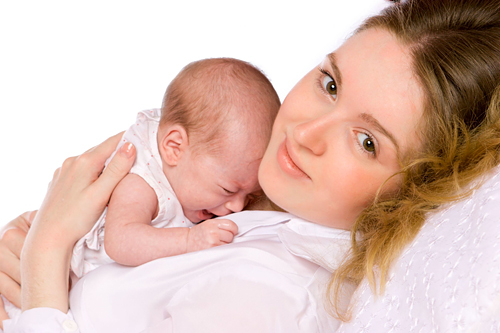
Objective causes of baby crying
A child may cry for various reasons. Some of them are easy to "calculate", others need to be guessed. But to know what it could mean baby crying every mom should. Here is a list of the most objective causes of baby crying:
- Hunger. The crying of a hungry child is accompanied by special movements and grimaces: he pulls his hands to his mother, smacks his lips and turns his head from side to side, looking for breasts.
- The child wants to sleep. relatively few. Basically, he sleeps - this is necessary for the development and processing of the information received. If the baby's mood changed dramatically, and he began to cry, not responding to attempts to distract and cheer him up, it is worth putting the child to bed.
- Wet diaper. Even disposable diapers sometimes cause a lot of anxiety in children when they get wet, not to mention reusable gauze diapers. Crying because of a wet diaper is accompanied by leg movements, so the baby is trying to get rid of it (knocking legs).
- Overwork. If the child began to cry for seemingly no reason, it is possible that he received too much information and was overworked. Crying, he signals the desire to rest. This often happens after the arrival of guests.
- The child is sweaty or cold. If the baby is crying, check if the ambient temperature is comfortable for him. If the nose and hands are cold, the baby is cold. And if he blushed, he had sweating - it means that he overheated. This discomfort can also cause children to cry.
- Colic. Colic is caused by gas in the intestines. characteristic feature crying due to colic is pulling the legs up to the tummy. Also, as a rule, colic occurs at the same time. Then the baby starts crying.
- Teeth are cutting. Teeth begin to erupt at the age of 6 months. In some children, this unpleasant process is painless, in others, on the contrary, it is accompanied by severe pain. At the same time, the child shows anxiety, constantly cries, pulls everything into his mouth and loses his appetite.
- Uncomfortable clothes. The crying of the baby may be due to the narrow elastic band on the sliders, bulging buttons, hard seams, lightning, which can pinch the baby's delicate skin. It is necessary to check whether all things are comfortable and whether they cause discomfort to the child.
- Weather change. Young children are exposed to weather anomalies: magnetic storms, sudden changes in temperature and pressure, and others.
- Lack of attention. Sometimes children just want to feel that their mother is there. Their crying is a kind of call. Crying due to lack of attention disappears as soon as the mother takes the child in her arms. Attempts to put him in the crib are accompanied by new crying.
- Pain. The crying of a child caused by pain is the most dangerous. A sick baby cries constantly. Because of the pain, the child often wakes up at night, shuddering sharply, and crying loudly. It is advisable to contact a pediatrician, especially if the parents can know the reason why the child fell ill (cold, fell, poisoned).
- Inflammation in the urinary tract. In this case, the child cries before peeing. An increase in temperature can also be an indicator.
- Irritation of the anus. IN this case the baby will cry when having a bowel movement. The reasons for this may be improper or insufficient hygiene, inaccurate insertion of a gas outlet tube or suppositories into the anus.
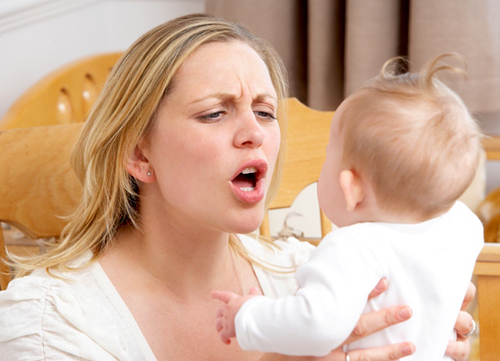
Why does the baby cry during feeding?
Separately, I would like to consider the crying of the child during feeding. As a rule, such behavior of a newborn often scares the mother. She fears that he will refuse to breastfeed altogether. Moreover, the well-established process of breastfeeding is extremely important both for the health of the baby and for the health of the mother.
Consider the reasons for the crying of the child during feeding:
- Pain in the mouth. It occurs due to stomatitis (thrush) or pharyngitis. Thrush can be identified by the white film that appears in the baby's mouth. With pharyngitis, the baby has difficulty swallowing due to a sore throat and cries.
- Otitis. This disease is accompanied by pain in the ears when swallowing. So hungry Small child literally pounces on the chest, but at the first sips comes in crying.
- Hot milk. For this reason, the child can take the breast, then throw it, cry, take it again, throw it ... Milk becomes unpleasant in taste if the mother has eaten onion, garlic or spicy food.
- "Rapid" milk. When milk fills the breast, its flow becomes too strong. The baby is choking and for this reason is crying.
- Lack of milk. If there is not enough milk, the baby sucks hard at the breast, but does not gorge. This makes him angry and he cries.
- neurological disorders. One of them is hydrocephalic syndrome. In this case, when swallowing, the child experiences headaches. You should immediately consult a doctor.
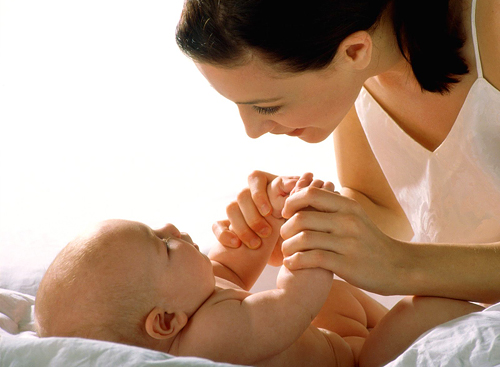
In order for the child to calm down, you need to find out the reason for his crying - that is, what he asks for - and eliminate it. It is clear that if the baby is hungry, he needs to be fed, if the child cries before sleep or is overtired, put him to bed. A wet diaper should be replaced with a dry one, and the baby should be washed and smeared with cream on the ass. A frozen baby will fall asleep as soon as it warms up: change clothes or lie down together under the covers and warm the baby with the warmth of your own body. If the child is sweating, wipe it with a damp swab and change into lighter clothes.
To save a child from colic, several measures should be taken to prevent colic and prevent their occurrence:
- Adjust ;
- It is correct to give the baby a breast;
- After feeding, hold the baby in an upright position: "gopher" or "column";
- Help your child cope with pain. To do this, you can attach a warm diaper to his tummy, put the baby with his tummy on your chest, or massage the tummy clockwise.
When teething, pain can be reduced with the help of teethers or special gels. To month old baby don't worry about uncomfortable clothes, choose seamless options or with the seams facing out. Rubber bands should not be tight. It is better to replace buttons with studs, and do not use zippers at all. Very comfortable slips that combine a blouse, panties, socks and "scratches".
If the child does not have enough attention, put aside all the affairs and caress him. The same should be done when the weather changes. Rock the child, sing him a calm song, tell rhymes or nursery rhymes. When crying caused by unidentified reasons, you need to seek the advice of a doctor and immediately begin the prescribed treatment. In the meantime, show your child how much you love him and how dear he is to you.
9 months of gestation is behind, the long-awaited meeting with the baby has come. The birth of a baby is a joy for parents, but this joy is often overshadowed by the crying of a baby. Mom and dad rush about in bewilderment, why does their child burst into tears? Because he can't say anything. Let's try to figure out what is the reason for crying little man? How can you help him? How to soothe?
The main thing in the article
Why is a newborn crying?
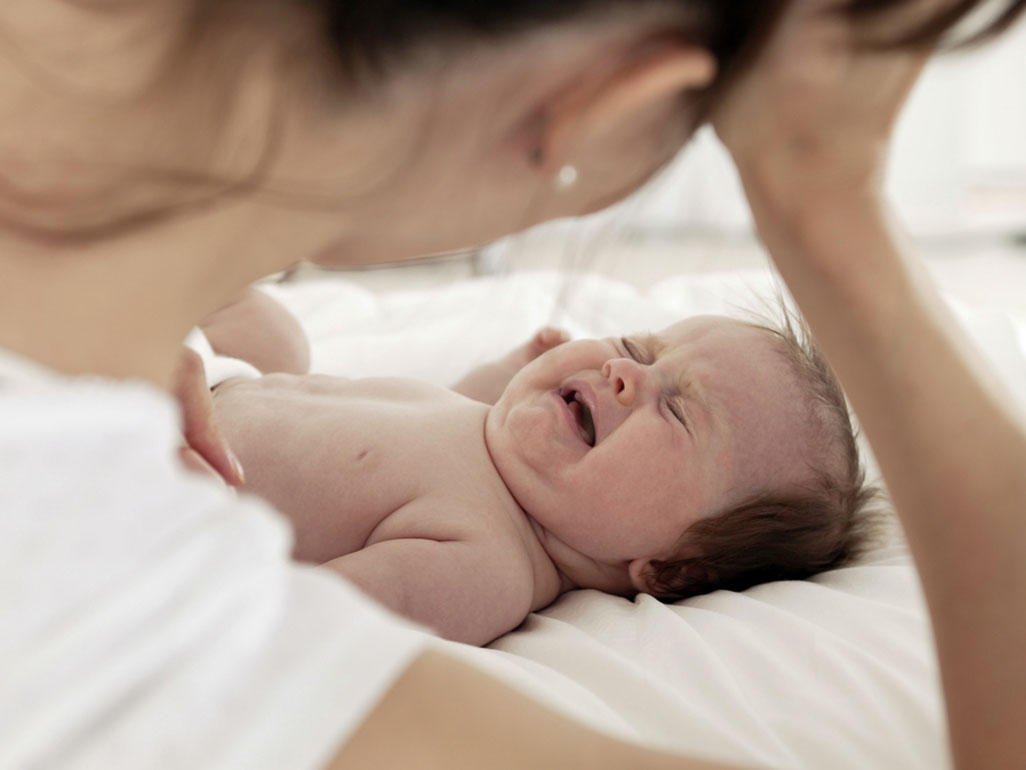
The little man has just come into this world and for him everything around is alien and incomprehensible. The only thing that is important for him now is the satisfaction of his needs and a comfortable existence.
There are many reasons for crying crumbs: hunger, a wet diaper, not comfortable temperature indoors or a banal desire to attract attention.
At first, parents are simply perplexed, what does the child want? But over time, they begin to distinguish and understand the reasons that cause crying. After all, the baby, with each “problem”, shows his emotions in the form of crying in different ways, he still cannot do otherwise. The timbre of the sound produced changes, the volume and even the intonation.
Common causes of crying babies

A newborn baby expresses his emotions, both positive and negative, through crying. Through it, he notifies about his feelings and needs. So, let's try to highlight the typical reasons why all newborns cry. 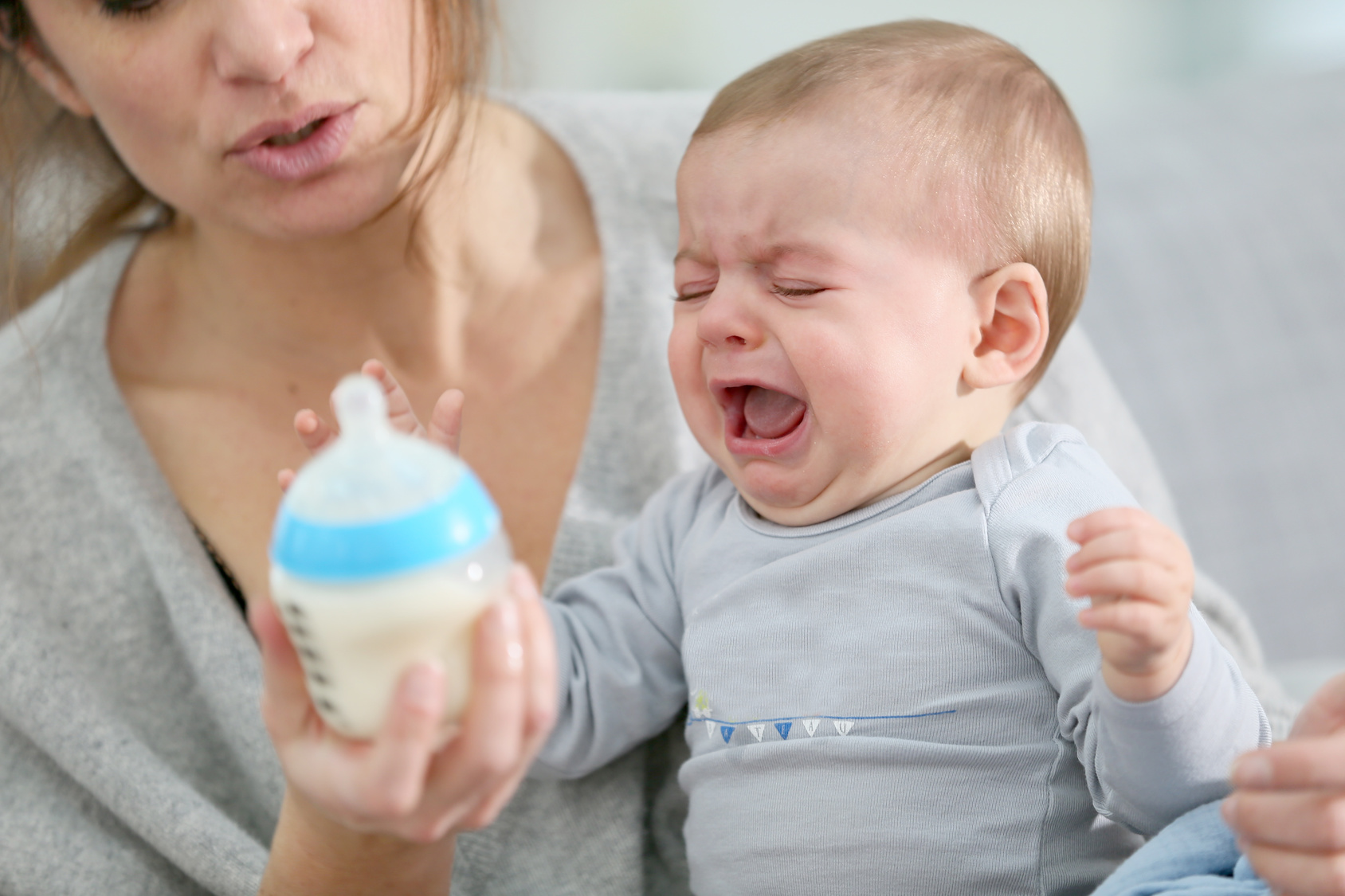
- Reason #1: Hunger. The most frequent crying is due to hunger. It is usually accompanied by reddening of the face and stretching of the arms up. In addition to saturation, the baby feels a sense of satisfaction and security, being near his mother's breast.
- Reason #2: Air. Yes, air is a fairly common cause of crying after hunger in newborns. It is swallowed during breast sucking and disturbs the baby. Therefore, after each feeding, it is necessary to keep the newborn “column”.
- Reason #3: Pain. Crying is often caused by pain. These can be colic (flatulence), an inflamed ear, stomatitis, body leakage from lying in one position, erupting teeth, and much more.
- Reason #4: Dirty diaper. Timely diaper change relieves not only from crying, but also from irritation of the skin under it. The discomfort experienced causes the newborn to call for "help".
- Reason #5: External stimuli. Heat or cold affect the baby. He feels discomfort and begins to show his "outrage" through crying.
- Reason #6: Can't poop. This problem is common among artificial children. A rather high density of feeding mixtures causes constipation in the baby.
- Reason #7: Lack of attention. There is a very close bond between mother and newborn. The baby, feeling her warmth, calms down. Therefore, very often, with the help of crying, he tries to get closer to his mother.
Baby cries in sleep
It happens that the baby is dry and fed, but cries in a dream. What can cause a baby to cry? 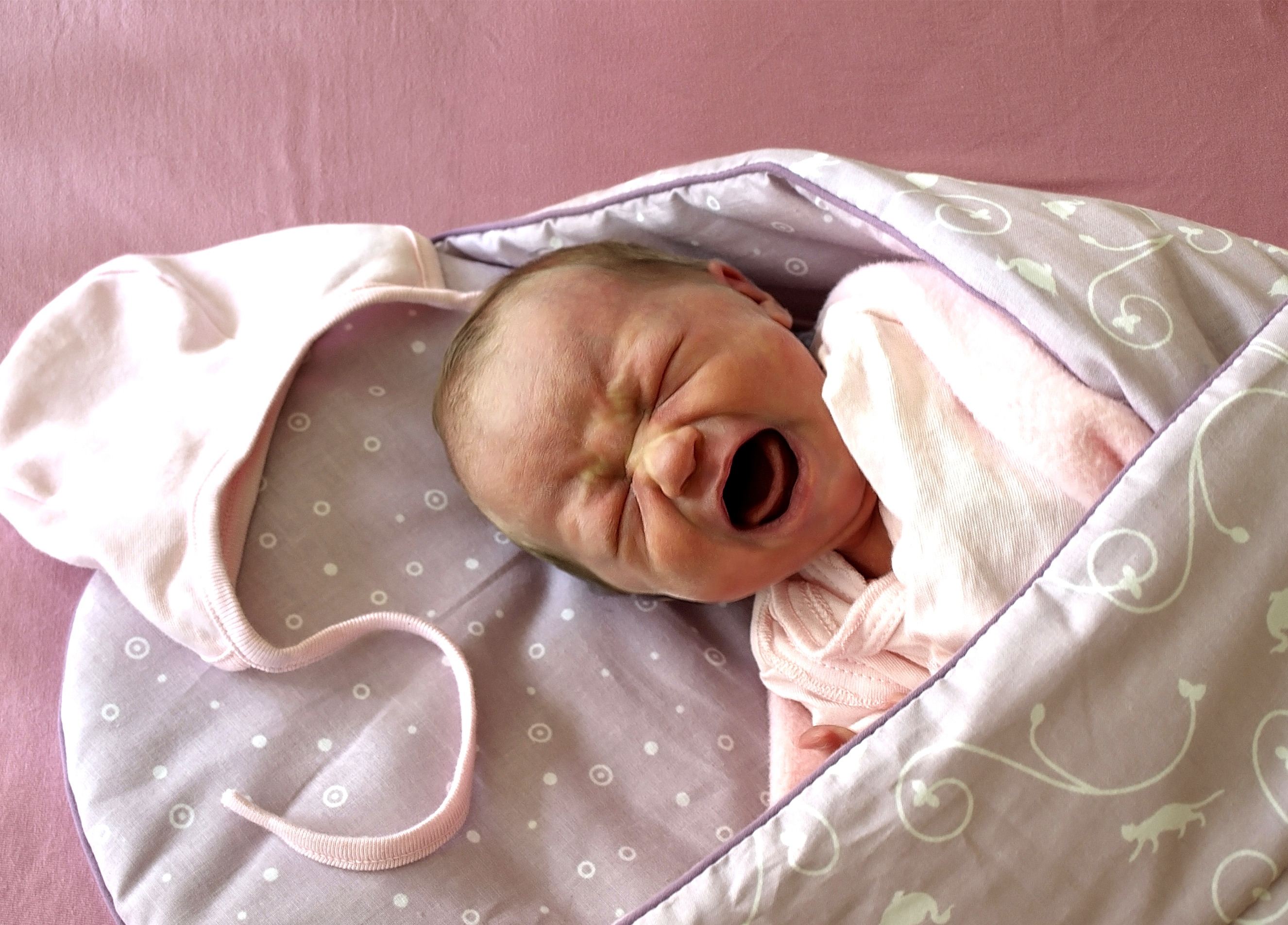
Of course, all of the above reasons can serve as a basis for crying in a dream, but most often the crumbs cry because of the experience of emotions that come in a dream.
Scientists have long proven that infants dream. It is emotional dreams that usually cause crying. An unusual event for a baby can provoke such a dream. The psyche of a newborn is just beginning to develop, and a visit to the grandmother, new faces of belated relatives, vaccination in the hospital can cause a storm of emotions that the baby will experience in a dream.
If a child's crying in a dream is not caused by painful sensations, then it is quite enough to go to the cradle and stroke the baby, gently pat on the pope, calm with words or a lullaby. He must feel that his mother is near and she will protect him. This usually helps and calms the baby.
Baby crying while feeding
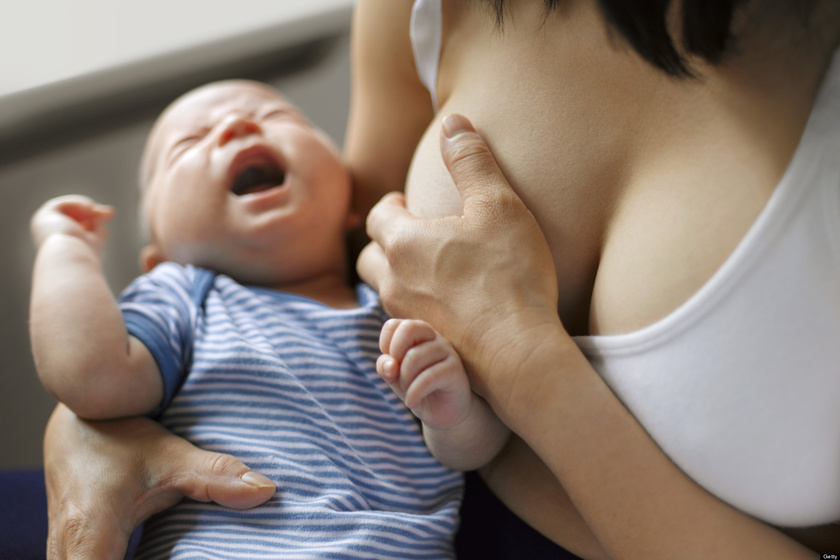 If the baby cries while eating, then there are basically four reasons for this behavior.
If the baby cries while eating, then there are basically four reasons for this behavior.
- Inflammatory process in the mouth. It could be thrush (white coating all over the mouth). It is visible to the "unaided" eye. Treatment of the disease will exclude crying during meals.
- Ear pain (otitis media). When swallowing, the baby feels strong pain and cries. You can check whether the ear is the culprit by pressing the tragus. If the ear hurts, then while pressing the child will twitch and cry even more. Contact your pediatrician, he will prescribe drops for the baby.
- Nasal congestion. This condition prevents the baby from breathing while suckling the breast. To feed the baby without crying in this situation, rinse and drip the spout.
- Pain in the abdomen. In this case, the newborn is restless, pulls the legs to the tummy. To exclude crying in this case, it is necessary to find out the cause of pain (colic, air, constipation) and eliminate it.
If the baby first actively sucks for 2-3 minutes, and then starts to cry, then the reason may be the lack of milk. If you are faced with the problem of a lack of milk, you can learn how to breastfeed in the article:
Sharp crying of the baby: causes of discomfort
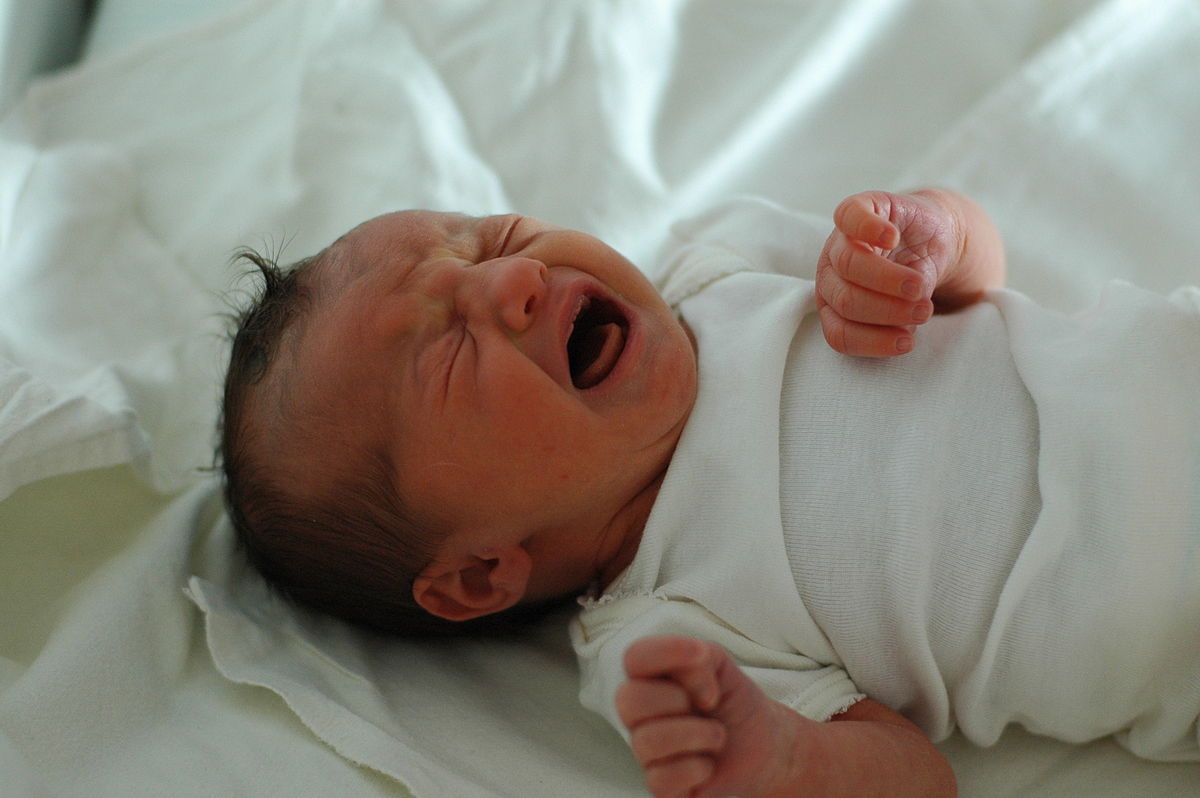
Abrupt or spontaneous crying of a newborn in the first months of life can be caused by external stimuli:
- A sudden bright light. To avoid such "tantrums" at night, use subdued lights. Do not turn on the main light with the baby if it was dark in the room before.
- Loud noise. It can be a speech, a TV, a dropped frying pan, etc. Try to protect your baby from loud noises that can scare him.
Over time, the nervous system of the crumbs matures and it stops responding with sharp crying to the above stimuli. The task of parents is to protect the newborn from external irritants and create comfortable conditions for the life of the baby.
What to do if the baby pushes and cries?
 Out of all the mass possible causes manifestations of attempts and crying should pay attention to the two most common.
Out of all the mass possible causes manifestations of attempts and crying should pay attention to the two most common.
- The child has colic. Then reddening of the face joins crying and attempts.
- Constipation. Such symptoms and the absence of bowel movements (normally up to 3 months this happens 3-7 times a day) indicate constipation. As mentioned above, this is a fairly common problem for artificial babies.
For reference: If the child is breastfeeding does not poop for several days, but at the same time the gases leave and the child behaves normally, then you should not worry. This is fine. Just mother's milk is completely absorbed by the child's body.
What to do and how to help the child?  At colic. They usually begin in the first month of a child’s life and “torment” the baby for up to 3 months, while the digestive system “ripens”. You can help your little one by doing the following:
At colic. They usually begin in the first month of a child’s life and “torment” the baby for up to 3 months, while the digestive system “ripens”. You can help your little one by doing the following:
- Lay the baby on the tummy before eating (15 minutes before).
- Massage the newborn's tummy clockwise with the palm of your hand around the navel. Such circular movements with a slight pressure will help the air move "to the exit".
- A warm diaper during spasms will soothe the pain. Fold the diaper into a square and heat well with an iron. Attach a warm diaper to the baby's belly, press him with your tummy to yourself and vilify.
- It will also help reduce flatulence. Dill water or special medicines. Usually these are drops from flatulence (Kolikid, Espumizan, Bobotik, Plantex, etc.).
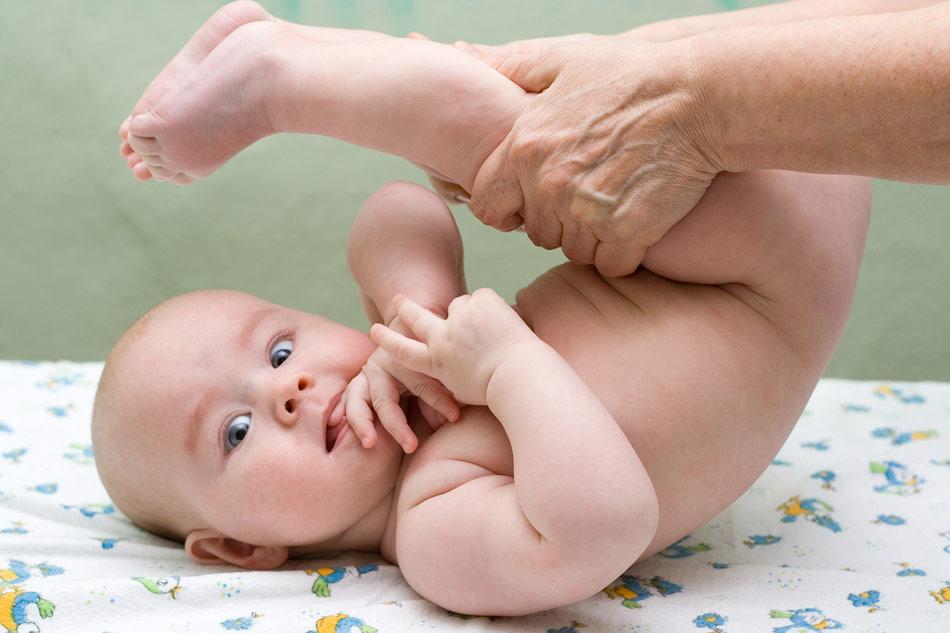
If the cause of crying and pushing is constipation, then the following tips will help mom:
- In the case of breastfeeding, reconsider your diet: it must contain fermented milk products.
- Drink your baby more often. Dill water also helps in this case.
- Do your exercises. When the child lies on his back, press his legs, bent at the knees, to the tummy and press lightly.
- Warm baths are relaxing and promote bowel movements.
- After consulting a doctor, help the child to poop. This can be done with drugs (they should be prescribed by a pediatrician) or in acute cases with an irritant. The legs of the child lying on his back are raised and a stick for cleaning the ears dipped in sea buckthorn oil, or a thermometer, is lightly pressed on the anus. This method is used in exceptional cases, when the child cannot poop on his own.
The baby cries often and a lot: alarming symptoms
Typical causes of crying are easily eliminated:
- hungry - feed;
- wet - change clothes;
- frozen - put on, etc.
After their elimination, the baby should calm down and fall asleep. If this does not happen and you have tried all possible ways to calm the baby (bath, carrying, motion sickness), then there is reason for excitement. 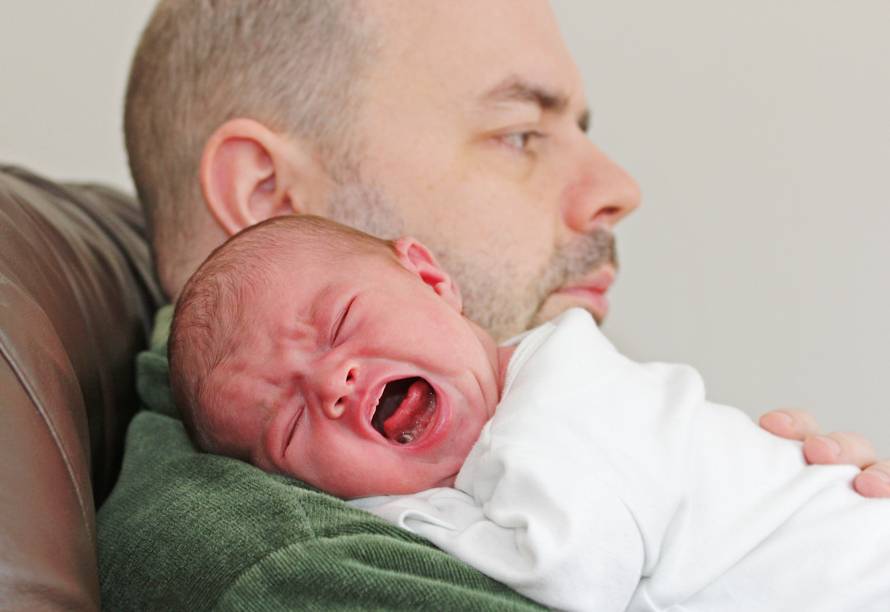
Warning symptoms that cause crying include:
- Malaise and pain. The crying of a child causes a disease: it can be colds (SARS, flu), inflammatory (skin dermatitis, sweats, otitis media, etc.) processes. In such cases, treatment is necessary.
- Bloating, constipation. The constant "impossibility" to poop indicates an improper metabolism or digestive problems. The cause of frequent constipation must be investigated in the hospital.
- Breast migraine. All children suffer from intracranial pressure, but, like adults, they tolerate it differently. Very often, sensitive babies cry in windy, rainy weather. If such bouts of crying continue for quite a long period, then contact your pediatrician.
- Teething. Such a process may be accompanied by headache, fever, strong salivation, fever. The child at this time is irritable, capricious. But as soon as the little white tooth cuts through the delicate skin of the gums, the baby will return to its normal (previous) state.
Strong crying in infants: how to react?
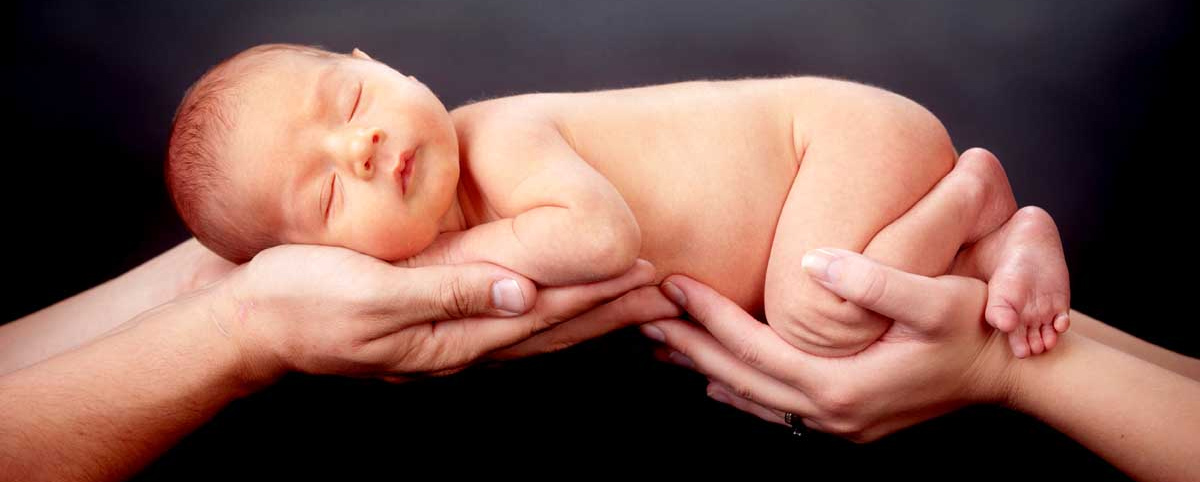 It's bad for babies to cry! The statements of grandmothers: “she will cry and stop” or “let her lungs work out” are unfounded. After all, the constant crying of a child loosens his nervous system and can provoke the appearance of an umbilical hernia. Therefore, it is simply necessary to respond to crying. If hunger or a wet diaper became the cause of whims, then feed and change it. Eliminate all other inconveniences that provoke crying.
It's bad for babies to cry! The statements of grandmothers: “she will cry and stop” or “let her lungs work out” are unfounded. After all, the constant crying of a child loosens his nervous system and can provoke the appearance of an umbilical hernia. Therefore, it is simply necessary to respond to crying. If hunger or a wet diaper became the cause of whims, then feed and change it. Eliminate all other inconveniences that provoke crying.
Take the newborn in your arms, he should feel warm and protected. Don't get irritated when the baby cries, because your emotions are being transferred to the baby. Even if you had an argument with your spouse and feel emotionally annoyed, do not take the child in your arms. First calm down and only then approach him. Otherwise, you will get a crying baby and will not know what is the reason.
The current misconception “The child will get used to hands” is not a reality, and the first three months of the hand is where it is warm, cozy and calm. Take the newborn in your arms and do not be afraid that he will get used to it.
After the first three months, the colic will pass, the sleep - walking - feeding - wakefulness will improve and the child will cry much less often and “on business”.
We find out the reasons for crying by its nature
![]() All mothers eventually begin to distinguish between the crying of their child and understand what exactly he wants. And for those mothers who are still at a loss as to why their baby is crying, we will give identification definitions for each cry.
All mothers eventually begin to distinguish between the crying of their child and understand what exactly he wants. And for those mothers who are still at a loss as to why their baby is crying, we will give identification definitions for each cry.
- hungry cry- loud, drawn out, gradually turns into a choking cry. When picked up, he begins to look for the chest, making movements with his head and arms.
- calling cry- the baby cries for a few seconds and calms down (waiting for the reaction of the parents). After 30–40 seconds, the action is repeated again. If the baby is left without attention, then the periods between crying decrease and one continuous op is obtained.
- Crying in discomfort(dirty diaper or body leakage from lying in one position) - this sound is more like a squeak, whimper and grunt. It is accompanied by fidgeting and attempts to get rid of the cause of discomfort (crawl to a dry area).
- Painful cry- loud, buoyant, of the same intensity. Mom can even hear the notes of despair in the cry of a child.
- Crying before sleep It's more like a whimper rather than a cry. These are even plaintive cries with yawns and squinting.
How to soothe a baby?
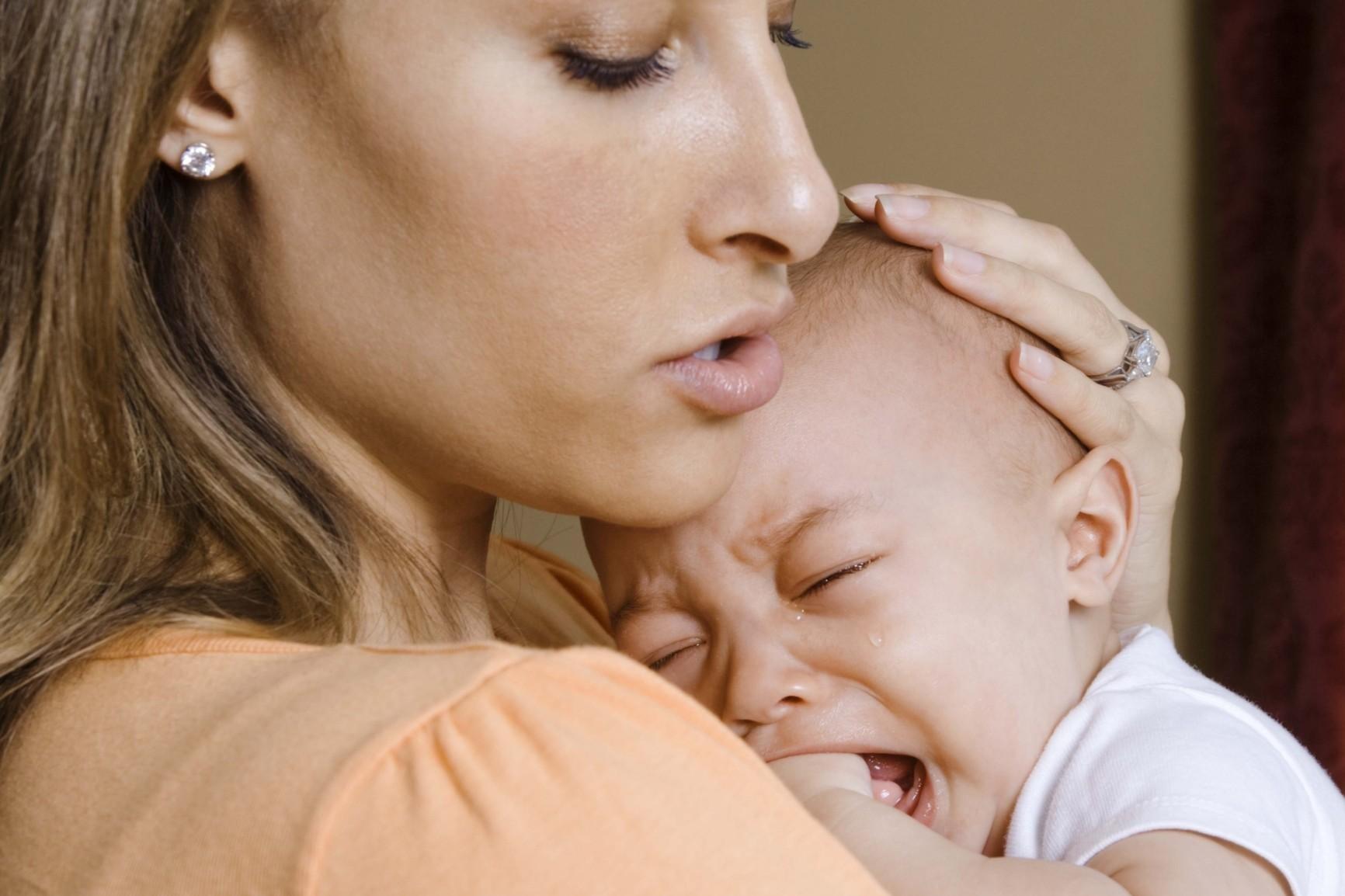
Initially, you should find out the cause of crying and eliminate it. The following will also help:
- Apply a blank. If the child takes it, then this facilitates the process of calming at times. The sucking reflex soothes the baby.
- Attach to your chest. Even if the baby is not hungry, still take him in your arms. 85% of babies calm down near the chest. Many mothers are saved this way from crying with colic.
- Take it in your arms, shake it and calm down. Very effective way calm. The baby can be downloaded or vilified with a column.
- Talk to your child. Gentle intonation has a calming effect. Sing a lullaby.
- Distract the child from the problem of a bright toy or a new object.
- Take a warm chamomile bath. She calms and relaxes.
- Take your child outside. Children love to walk and usually do not cry during a walk.
How did you comfort your child? Share your experience with young mothers in the comments.
From the moment a child is born to the appearance of speech cry- this is the main way in which the baby tries to convey to us his desires and requests. Cry baby - this is his "" with you: this is how he reports what worries him. Proverb "Whatever the child amuses, if only she does not cry" confirms the opinion of modern pediatricians. It's bad for babies to cry! It is this meaning that is embedded in famous proverb, and not the desire to occupy the child in any way, so long as it does not distract the parents.
Cry does not train the lungs and does not temper the character - forget about it! On the contrary, it loosens the nervous system of the crumbs and deprives him of the confidence that the world safe and friendly. And also prolonged crying can be harmful to health child literally and cause the formation of an umbilical hernia.
Baby's first cry- this is the first cry of the baby after birth. The biological meaning of the first cry is to resist the separation from the mother, it is a message to the world about the protest against habitat change. A similar reaction occurs in some mammals, especially in young primates. One way or another, but by the first cry of a newborn, his viability is judged. The peculiarity of the first cry - loud, weak, sluggish - is a criterion for assessing the condition of the newborn. Babies cry a lot, but the more parents communicate with their child, the more they get to know each other, the less the duration, frequency and intensity of crying. During the day, the baby cries the most, usually between 4 and 8 pm.
Over time, you, like me in due time, will learn to distinguish all the multifaceted shades and intonations of your child's crying. So, why does a baby cry?
Why is the baby crying?
— Hunger or desire to take mother's breast (sucking reflex). The most frequent crying in the neonatal period. You will quickly learn to recognize it by its characteristic demanding shade. This cry, as a rule, is intermittent, it is separated by several pauses, during which the baby carefully observes your actions and decides whether they hear him or not. Usually " hungry cry” occurs no earlier than 2 hours after feeding, but no one guarantees that the baby will not want to eat mom out of turn.
— Crying because of a full diaper. Occurs less often than "hungry": my children, for example, did not pay attention to such trifles. However, some people clearly don't like it and may cry persistently. Such crying is usually plaintive.
- Crying "I want to sleep." Occurs after 3 months and not in all children. Crying "I want to sleep" is often a whimpering, petulant, or resentful yell. The kid is tired, he does not want to play anymore, or communicate, or look at anything, and demands to put him to bed. Rare babies are able to fall asleep on their own and, as a rule, need a special ritual of going to bed.
— Discomfort due to bright light, uncomfortable clothing, cold, loud sound. It is clear here that the mother must guess what the child is telling her about, and immediately eliminate the cause of discomfort.
— Fear due to the fact that mom is not around- the desire to snuggle up to mom, to feel protected.
— Reaction to weather changes. Toddlers are very sensitive to atmospheric phenomena and even the phases of the moon, they very subtly feel changes in atmospheric pressure, magnetic storms and other natural phenomena.
— Pain and physical ailments. Understand if it's not baby crying a consequence of some disease, only a doctor can. The specialist is well aware features of crying in children with intestinal colic, increased intracranial pressure, teething.
- The greatest problems are created by mothers in crying with intestinal colic. It is accompanied by intense clenching of the fists, straightening of the legs, reddening of the face. The kid then presses the legs to the tummy, then sharply straightens them (knocks). The abdomen is swollen. A whole range of measures to relieve intestinal colic will help here.
What to do when a child cries a lot?
It is necessary to respond to the crying of the baby as quickly as possible. Take it in your arms, shake it, attach it to your chest. In turn, eliminate all possible inconveniences. Necessary calm the crying in any way possible. In the arms of the mother, the baby quickly calms down. But the mother herself must also remain calm so that her confidence is transferred to the baby. Soon you will easily be able to distinguish crying #1 from crying #8 :-)! By the way, trust the baby to dad more often. I noticed that my husband's son in his arms calmed down faster than mine. Apparently, men are less sensitive to baby crying and pass on their calmness and goodwill to the children. Do not be afraid that the baby will get used to the hands. Crying at this age is a reflection of a real problem. The baby is experiencing stress, so the task of parents is to alleviate his condition in all available ways. when the sleep-feed-wake pattern has been formed, reason for crying can be determined based on the time crying baby.
How to calm a crying baby?
7. Sing a lullaby or other song.
8. Distract with an unusual sound in your own performance: the sound of “Tr-r-r-r-rrrr!” Helped my children a lot. They were distracted and stopped crying instantly. True, the method did not last long, only about a month.
9. Place a breast pad soaked in breast milk. This will give the baby the feeling of a mother nearby.
10. Give a dummy, if, of course, he takes it.
11. Give some water to drink.
12. Rhythmically walk and sing at the same time. For the eldest son, it was a fail-safe method of getting to bed.
13. Give the child to dad, grandma, grandpa, etc. “Change hands”, in a word.
14. Jump in front of him with a bunny. Helps older babies. As soon as Daniel started screaming, I asked the elder Emil to jump. The kid just laughed with delight!
15. Spin or sit down abruptly with the baby in your arms.
16. Bring the baby to the house plant. Living leaves and flowers will surely interest him.
17. Ride in a stroller, seat in a child seat.
18. Take it outside or onto the balcony if it's a warm season and you don't need to get dressed first.
19. Start the hanging mobile, let him see how the toys are spinning.
20. Even kids are interested in a lamp-projector of drawings with illumination on the ceiling. If you have one, use it at night.
21. If you suffer from colic, put the baby on your lap, putting a warm diaper, or wear it on your hands, placing your palm under the baby's tummy, and at this time the head lies on the crook of your elbow.
22. Instead of a warm diaper that cools down instantly, I used flax seed sewn into a linen bag. Iron it on both sides with an iron, the seeds retain heat for a very long time.
23. Massage the tummy clockwise, pull your knees to the tummy.
24. A warm bath can help.
25. If nothing helps to relieve colic in a child, put a gas outlet tube for the baby (it is better to use not a pharmacy version, but a small rubber bulb, which should be cut off the “ass”) and release the gas. This will 100% help.
What helped your child calm down quickly? Dear mothers, if you have your own methods, how to calm a child Be sure to write about them in the comments! Many thanks!
It is not too correct to say that the baby is naughty. A whim, according to Ushakov's dictionary, is a whim, an unmotivated desire. Whereas the baby cries only if he is uncomfortable and needs something. What exactly does a crying baby need - it is necessary to determine his mother. In fact, there are not so many reasons for crying babies. Not all of them, however, are easily eliminated.Desire for comfort
There are several reasons why babies cry. Among them, the simplest and most common is a wet diaper. Intuitively, the baby wants to be warm and dry. As soon as he feels that he is uncomfortable, he will call his mother. Especially if this feeling prevents him from sleeping. The only way to call mother for a baby is crying. Therefore, the first action of the mother to calm the newborn is changing the diaper.Hunger
If the baby is hungry, then he will definitely inform his mother about this by crying. In the first month of his life, the child most often wakes up precisely from hunger. In fact, in order to eat, he wakes up. After all, urination, for example, occurs in a dream. Therefore, after changing the diaper, the baby must be fed.Pain
Pain is also a feeling of discomfort that the child needs to be helped to cope with. The causes of pain can be different. It can be intestinal colic or cutting teeth. If the baby has changed the diaper, fed him, and he does not stop crying and cannot fall asleep, then most likely the reason is in pain. If age toddler 1-3 months, then the pain is more likely to be associated with colic. In this case, you should put a warm diaper or heating pad on the baby's stomach, massage the stomach in a clockwise direction and give medicines for baby colic.Crying from a toothache is more likely in babies older than 5 months. In this case, painkillers will help.
Breast sucking itself gradually becomes something more than just a way to remove hunger for an infant. It is also a way of natural pain relief. Therefore, a slightly grown-up baby can ask for breasts not only from hunger, but also to calm down and reduce pain, including toothache.
Desire to communicate
The desire for bodily contact, touch is not just a whim of the baby, but his vital need. Therefore, the baby can be full, dry, nothing hurts him, but he continues to cry. This is because he wants attention and communication. In this matter, it is necessary to find a "golden mean". For the baby, it is ideal to be in the arms of the mother around the clock. But it is quite clear that this is impossible. Therefore, the mother must find the necessary balance so that the baby has the opportunity to be in her arms, and she herself can do the necessary things. Both the bias towards constant hyper-concern for the baby (the mother drops everything and always immediately runs up to the child at the slightest cry), and ignoring the baby's need for communication leads to the formation of a capricious child.In any case, you must first eliminate the most simple reasons possible crying and whims of the baby - a wet diaper and hunger. If pain is the suspected cause, then no immediate effect should be expected from the measures taken to alleviate it. Reducing it can be difficult and time consuming. Sometimes you just need time and care of your beloved mother so that the baby calms down.
Often, young mothers are faced with baby crying and cannot understand what is wrong. It is almost impossible to calm a newborn without eliminating the cause of crying. What to do? How to understand why the baby is crying? How to calm a newborn baby and provide him with comfort?
Why is the baby crying
If the baby screams and does not let up, then there is a reason for this. It must be understood that a newborn child uses crying as a means to convey to others his dissatisfaction with something. A baby still does not know how to manipulate and seek mother's attention by crying. Therefore, when you hear children's cries, you need to take it seriously and look for the cause.
The main reasons for the crying of a newborn baby:
- Hunger.
- Colic.
- Wet diaper or diaper.
- The baby is cold or, conversely, he is hot.
- The child is tired and cannot sleep.
- Fear, anxiety.
- Desire to satisfy the sucking reflex.
- Malaise, illness.
- Response to geomagnetic and weather conditions.
How to eliminate the causes of crying baby
Hunger is easily eliminated by giving the baby a breast or a bottle of milk or formula. It is necessary to feed the baby on demand or follow the regimen and not allow breaks in meals for more than 3-4 hours. For children first 3 months of life, the breaks between feedings should be no more than 2-3 hours.
It is enough to replace a wet diaper with a clean one, and the baby will immediately stop crying. You can not miss this moment and forget about changing diapers. A long stay in wet diapers threatens not only discomfort, but also inflammation of the skin (diaper rash).
Colic is a very common problem. Dealing with them is not easy, but possible. In this case, it may help:
- tummy massage clockwise;
- riding a ball (the baby lies with his stomach on the ball, and the mother, holding the child, gently rolls him back and forth);
- anti-colic drugs;
- frequent laying on the tummy;
- a warm heating pad or diaper to be applied to the baby's stomach;
- use of special anti-colic bottles.
A cold baby needs to be warmed up. To do this, it is enough to dress him warmer and vilify in his arms. You can use a heating pad wrapped in a diaper. It is better not to use heaters, as they burn out oxygen in the room, which is very harmful for an infant. Their use is advisable only if the room is really very cold.
Often babies cry out of a desire to satisfy the sucking reflex. This can happen both in sleep and while awake. In order to calm the baby, it is enough to give him a pacifier, a bottle of water or a breast.
When a child is hot, everything must be done to eliminate the cause of the heat. If this happens on the street, then you need to go into the shade and give the baby a drink of water. If possible, take off any excess clothing. At home, you can turn on the air conditioner or open the window, while making sure that the direct flow of cool air does not fall on the baby. It is also necessary to install a regulator on the radiators in order to prevent excessive heat in the room.
If the baby is tired and cannot fall asleep from overexcitation, then the mother needs to retire with him in a quiet room, shake slightly, breastfeed, sing a song. In 99% of cases, these measures will be enough to make the child fall asleep. In a similar way, you can calm a child who is experiencing fear or anxiety.
A child may also cry because of some disease, such as otitis media. In this case, it is difficult to immediately determine the cause. It is necessary to monitor the body temperature of the crumbs. If the crying continues for more than a few hours, then the best solution is to go to the doctor.
Also, crying can be caused by geomagnetic storms, low atmospheric pressure, etc. Unfortunately, in this case, it is impossible to eliminate the cause, one must be patient and be constantly near the baby, thereby alleviating his ailments.
Why else can a baby cry. How to help him?
A lot of babies cry while swimming. There may be several reasons - too cold or hot water, fright (especially during the very first baths), discomfort, for example, associated with a cramped bath or other factors. It must be remembered that bathing should bring joy and pleasure, so a crying child should be immediately removed from the water and the procedure should be postponed until the next time.
Sometimes babies cry a lot in their sleep. This may be the so-called scanning cry, when the baby checks to see if the mother is nearby. This is a subconscious reflex, and the child unconsciously screams without even waking up. It is enough just to take the baby in your arms, give him a breast or a dummy, say a few kind words to him, and the baby will immediately calm down.
Also, crying in a dream can be associated with an uncomfortable posture. In this case, you need to carefully turn the child over so that he lies freely and not pinched. You can put it on your tummy. This position relieves the pain of colic, and many babies intuitively prefer this sleeping position. Also, many children love the pose "on the side, a little falling on the tummy." This pose can also relieve colic spasms.

Another common symptom is crying after feeding. This suggests that the baby is tormented by discomfort. You can wear it vertically, lightly pat on the back, facilitating the release of excess air. The baby will immediately stop screaming as soon as he burps air or excess food.
Babies often cry because of teething. This is inevitable and painful, but it is possible to alleviate the condition of the child. To do this, you can use special teething toys, anesthetic gels for gums, peeled and washed carrots from the refrigerator (it can only be used for those babies who do not yet have teeth, otherwise the child may bite off a piece and choke). Of course, all these methods provide only temporary relief, so you have to be patient and wait until the tooth finally erupts.
Often, children's cries are associated with uncomfortable clothing - things are tight and small, rough seams rub the skin, low-quality dye causes allergic itching and rashes, the fabric of the product is unpleasant for the skin. In this case, you need to pay great attention to the children's wardrobe and choose only high-quality children's clothing. It is better to buy the size of things a couple of values \u200b\u200bmore than necessary. Firstly, such things will definitely not be cramped for the child, and secondly, they will last for a longer time.
Sometimes children cry from loneliness. This happens in those families where the child is not given enough time, and the parents are busy with work and personal affairs. What to do in this case? Of course, remember the role of mother and take care of the baby. outlook month old baby is such that he feels himself as part of the mother, her presence and tactile contact are of great importance for his development and psychological comfort.

Crying for no apparent reason is characteristic of children who are easily excitable. They experience strong emotions, but still cannot cope with them on their own due to immature nervous system. It all results in constant whimpers, whims, screams.
What to do if the baby is crying for no apparent reason
Sometimes the child is constantly crying, and the mother has already done everything to make him comfortable, but he does not let up.
Sound sleep is the best medicine for these babies, but putting them to sleep is just not easy. Here are some tips for calming and putting a crying baby to sleep:
- Tight swaddling helps a lot. Of course, you should not constantly swaddle the baby. This is harmful and does not contribute to development, but this method can be used during sleep.
- "White noise". Strange, but many children love monotonous hissing sounds. It can be a hair dryer, a vacuum cleaner, an out of tune radio that does not broadcast any radio station. Now you can even download a music file with such sounds and turn it on to your little one from your smartphone or mp3 player.
- Many experts are against pacifier training, but it can be a panacea. A huge percentage of children up to a year and older can only fall asleep with her. No need to suffer - give the baby a pacifier if he likes it. When he grows up, the need for it will disappear by itself.
- Light rocking in the arms is an ancient and proven way to calm and lull a child. But do not do it too hard and abruptly. This is harmful, and the baby may even lose consciousness. Only light and smooth movements with a small amplitude, like a dance. By the way, such a modern gadget as a deck chair or an electric swing can help here.
- Children sleep most soundly in a kind of cocoon from a blanket. You need to make a kind of nest by tucking a blanket under the back and tummy of the crumbs. In this position, he will be warm and comfortable, the baby will fall asleep faster and will sleep much calmer.
- A mother's voice can have a very good calming effect on the baby. You can sing a lullaby, read poetry, talk to your child in a quiet, calm voice. This will help stop crying.
- Millions of women have already appreciated the benefits of a sling. In it, the child is as close as possible to the mother, while his posture is quite physiological, and the woman's hands are free. With the help of such a device, it is easy to rock the baby, if you just put it in a sling and walk around with it.
- Sometimes switching the attention of the child helps to distract from crying. For this purpose, you can use rattles, clapping, rustling with a bag or paper. After the baby calms down, it will be easy to put him to sleep.
- Helps sleep for some excitable babies long walk outdoors or bathing followed by a massage.
- The benefits of motherhood cannot be underestimated. No need to be afraid to carry the baby in your arms. This is natural and normal. Contrary to many opinions, it is impossible to “accustom” a baby to hands. If a child wants to be close to his mother, then this is not a whim, but a natural desire. Next to mommy, any baby feels good and safe. This is the maximum effective method soothe the baby.
If the baby cries often, then you need to be more attentive to him, and the reason will become obvious, and by eliminating it, you can easily achieve peace and quiet in the family. If the cause cannot be eliminated (teeth, geomagnetic conditions), then you need to be patient and survive these moments, they happen to everyone.
